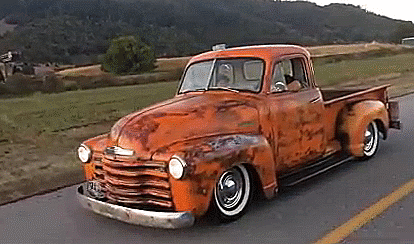Vehicle Restoration Calculator
AnyCalculator.com ExactWeather.com
A Junk Yard Rescue
Restoration
Cost Calculator
Useful Links:
ClassicIndustries.com - 1947-1959-chevy-truck-model-years-guide - (Great Information)
ClassicIndustries.com - 1960-1972-chevy-truck-history - (Great Information)
Hagerty.com/media/car-profiles/definitive-chevrolet-pickup-buyers-guide/ - (67-72) - (Great Information)
The Diffference between the 67-72 Chevy Trucks
With the introduction of the 1973 model year, we realized that 1972 was the end of an era for all American cars and trucks. The series of Chevy trucks that was produced from 1967 to 1972 was popular for many reasons.
These were real trucks. They didn't pretend to be big cars. (That came later.)
For those of you who are learning about these trucks, it's fairly easy to tell what year they are. The six years of production, from 1967 to 1972, are divided up into three groups of two years. We have the '67-'68 trucks, the '69-'70s and the '71-72s.
1967 and 1968 trucks shared the all-new body introduced in 1967. When I first saw a '67 I decided right then I'd have one someday. The only real difference between the two is that the '68s had the federally-mandated side marker lights that are found on all American cars and trucks from that year on. The 1967 Chevy trucks had some of the nicest styling we'll ever see on a truck. The early '67 pickups came with a small back window that was only available that year in this series of trucks.
1969 and 1970 Chevy trucks differ mainly in having new front end sheet metal. Gone is the sloping hood that was unique to the '67 and '68 trucks, replaced with a version that has a more upright leading edge. The '69 and '70 models are easy to find, and since they lack some of the features introduced in 1971 they are less expensive to buy than the '71 and '72 trucks.
The hood and front fenders interchange between 1969 through 1972 trucks, with the only difference being the mounting holes for the bowtie emblem on the '69 and '70 hoods, which was moved to the inner grille on the '71 and '72 models. Many of the other parts also interchange, except for the wheels on half-tons, and the front brakes.
1971 saw the introduction of front disc brakes on all Chevy light trucks. That year, all half-ton pickups and Suburbans were built with five-lug wheels in a five-inch, "five-on-five" bolt pattern. (This bolt pattern is shared with some GM full-sized cars.) The 1971 and 1972 trucks were given new inner and outer grilles that lacked the center bar used on the '69 and '70 models.
1972 was "the last of the all-steel trucks", since interiors were almost completely covered with plastic starting with the '73 trucks. The trend was for the industry to produce trucks that provided the comfort and luxury found in full-size cars, with power windows being offered for the first time in Chevrolet trucks.
There's no doubt that the trucks that Chevy produced between 1967 and 1972 are classics.
Their simplicity, a good supply of original replacement parts and the wealth of reproduction and aftermarket parts for them combine to ensure they will be popular for a long time.
